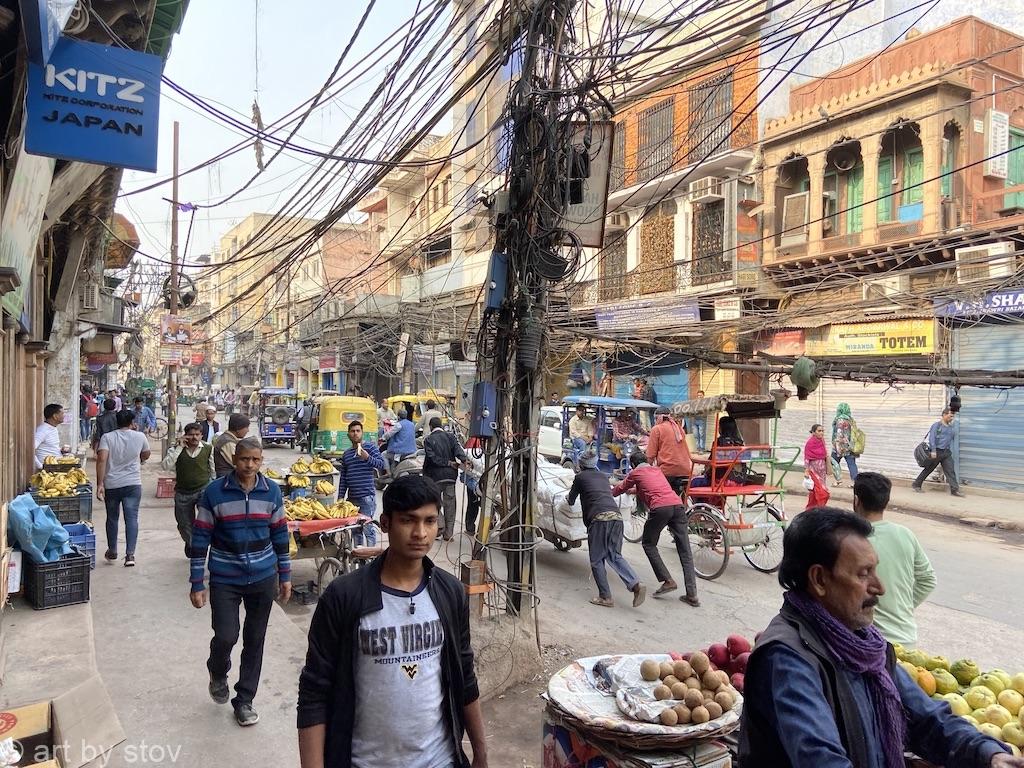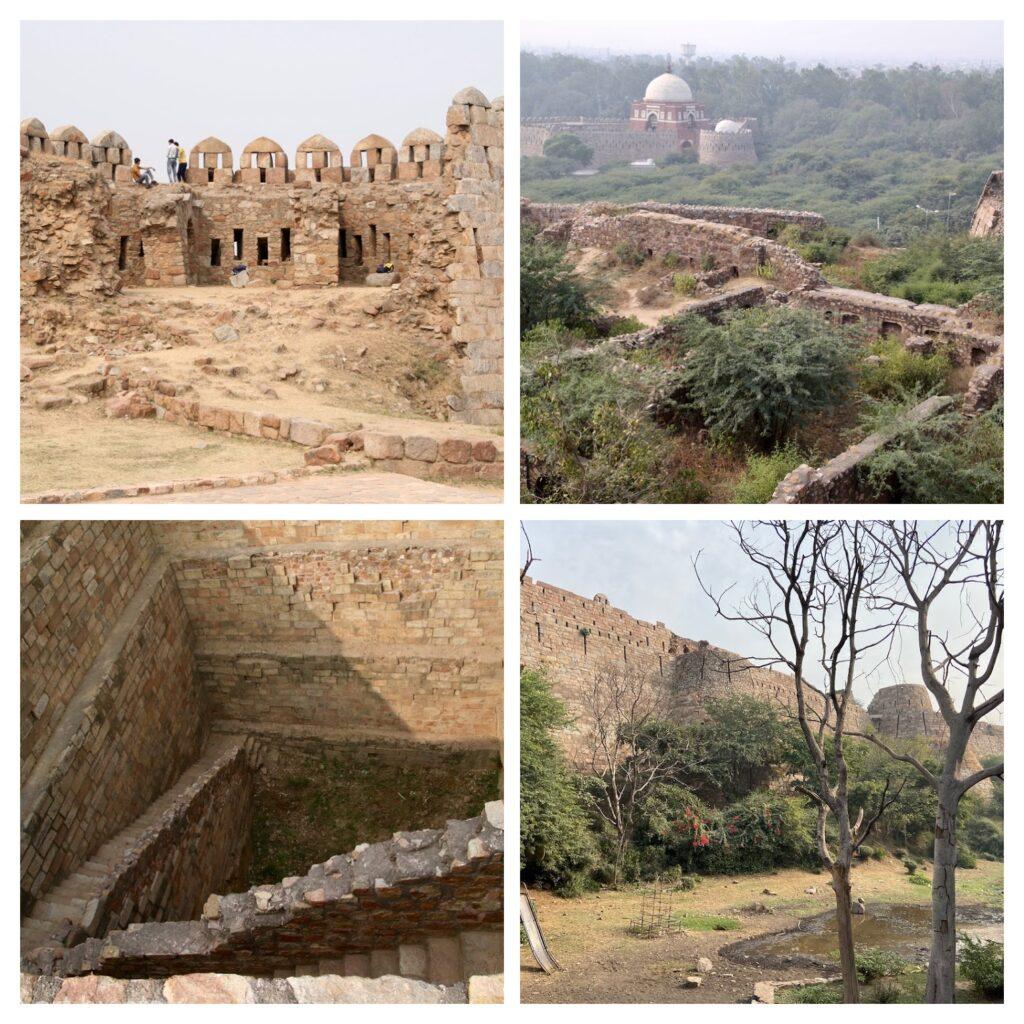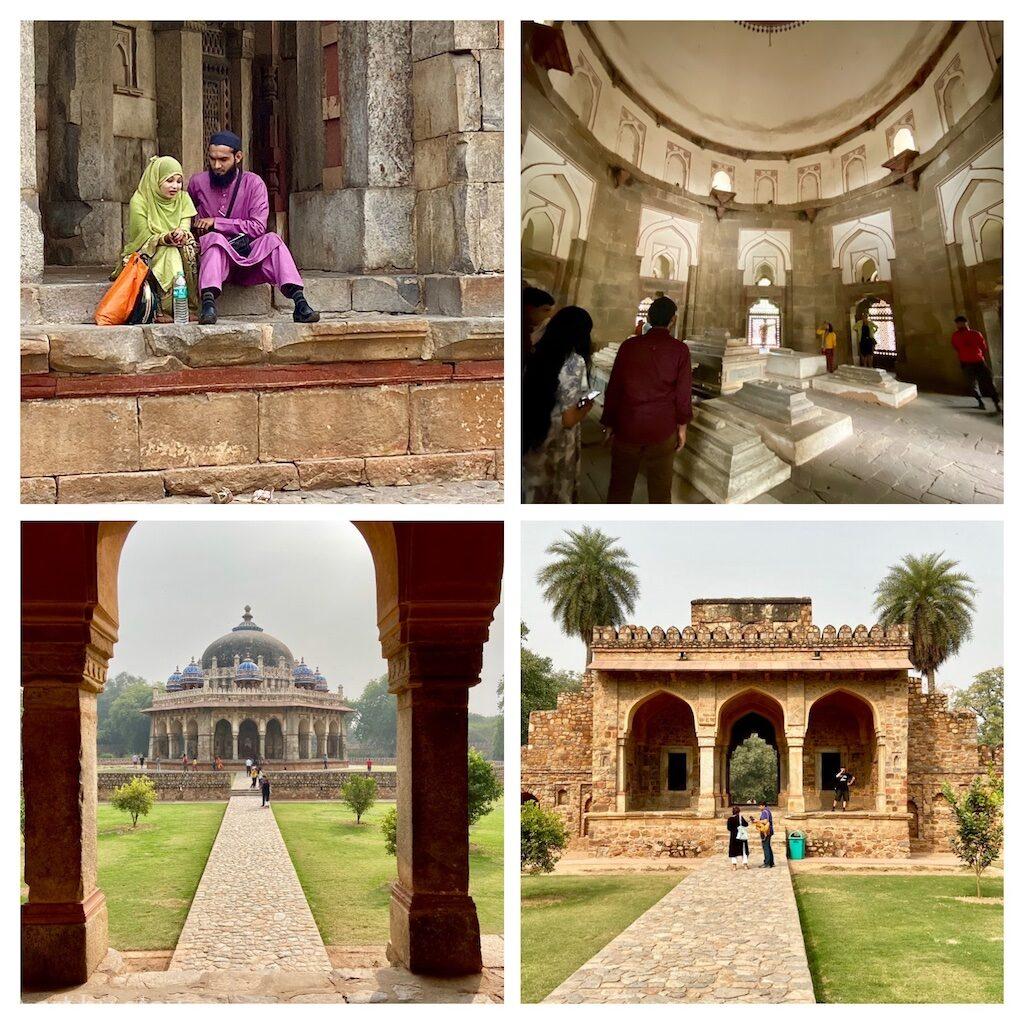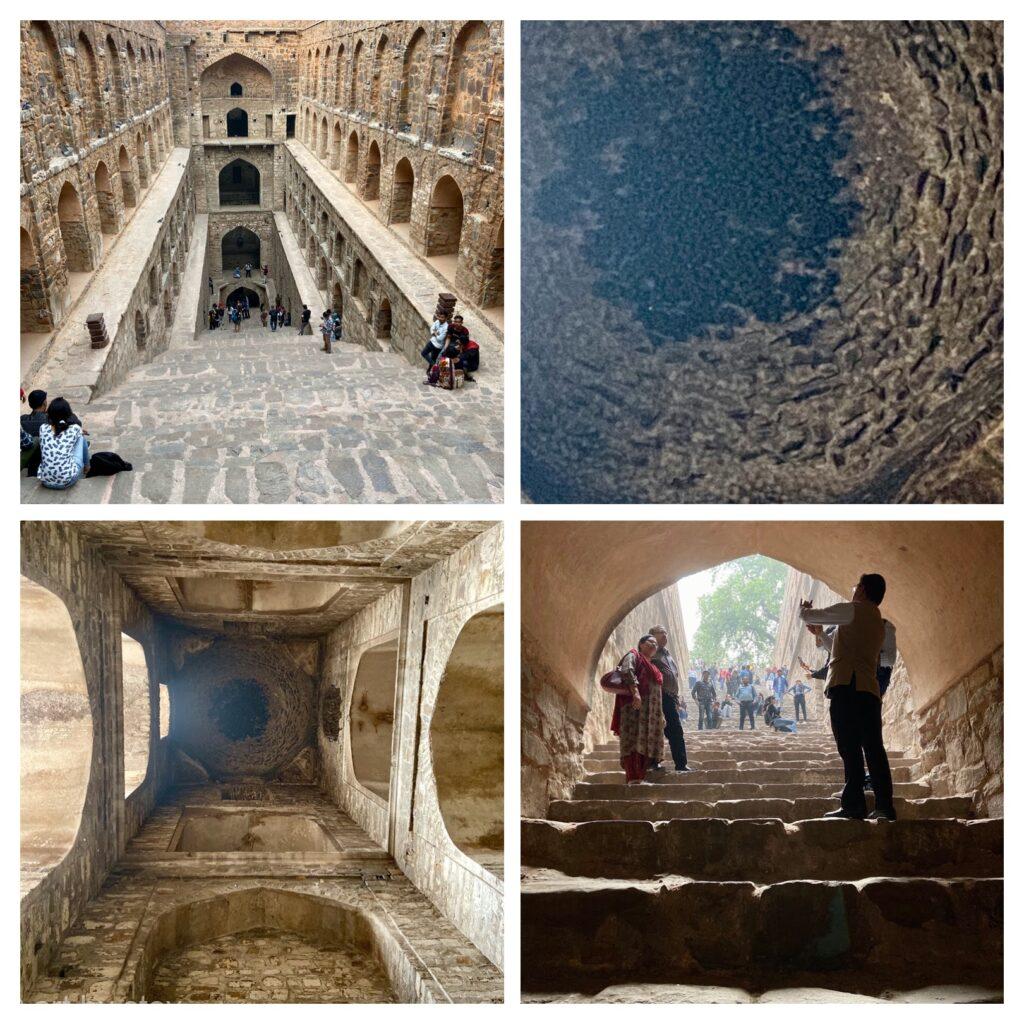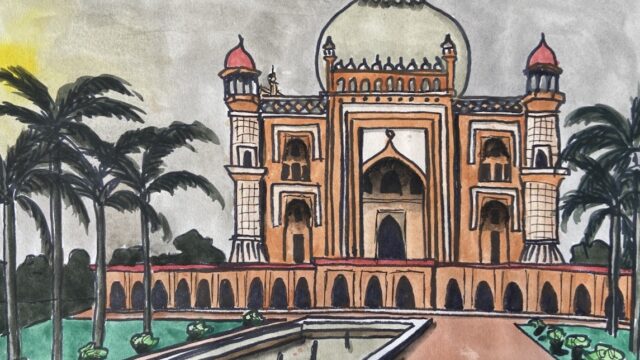
Blog 15. Delving back into the history of India’s enigmatic captial city and encountering wildlife in the most unusal places
Day 13 – Tuesday 26th November 2019 – Delhi
So here we are in Delhi, India’s capital city. We have both been here before and were determined not to hit the obvious tourist trail this time round. We decided to hire a car and driver for the day and go exploring.
“Delhi has more layers of culture, civilisation and history extant in it than any other city in India, arguably, in the world” says Tarun Tejpal of India Today reviewing William Dalrymple’s book City of Djinns. He goes on to say it is “the finest labour of love on the capital in recent times”. Much of our itinerary for our two days in Delhi derived from, or was inspired by this book.
Dharamveer, our driver was due to arrive at the hotel at 09:15. We sauntered out at 09:45 after a leisurely and for me very Indian breakfast in Pickwicks, which doubled as the breakfast room.
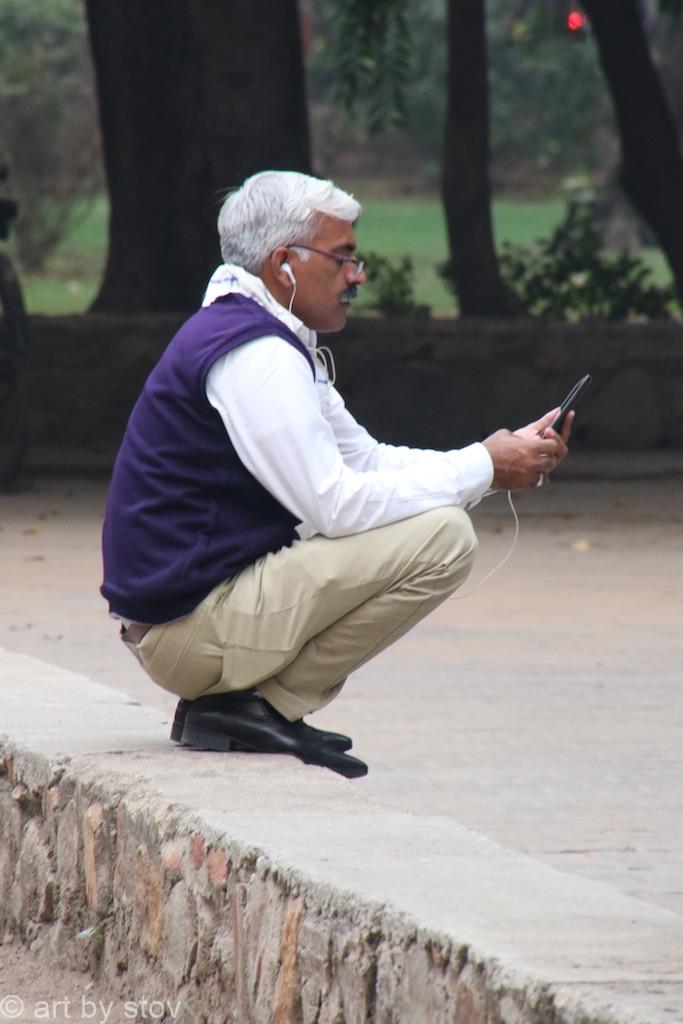
We were met by a smiling Dharamveer who, very unusually for an Indian man, had grey, almost pure white hair. We apologised profusely for keeping him waiting; we had just so enjoyed the chill of a relaxed start. To paraphrase Michelle Obama, “We needed to do a better job of putting ourselves higher on our own “to do” list”.
He asked what we had planned for him. After we delivered our rather hopeful list he said it should all be possible. Our first stop seemed to be a major haul out of town. “It’ll take 1-2 hours to get there, it is far” Dharamveer told us. We set off into the traffic and Dharamveer installed into us the three requirements of safe driving in India:
“Good horn
Good brake
Good luck”
As traffic zoomed past us in all directions with horns tooting and arms waving we were glad we were not driving ourselves.
We drove out past Mehrauli the first city which was built on existing fortifications in the late 12th Century. In the near distance we saw the Qutub Minar for many years the highest tower in the world and on whose site a 7.2 metre high iron pillar stands which dates from c402AD and still shows no sign of rust…but Mehrauli wasn’t on our agenda today, we were heading for Tughlakabad.
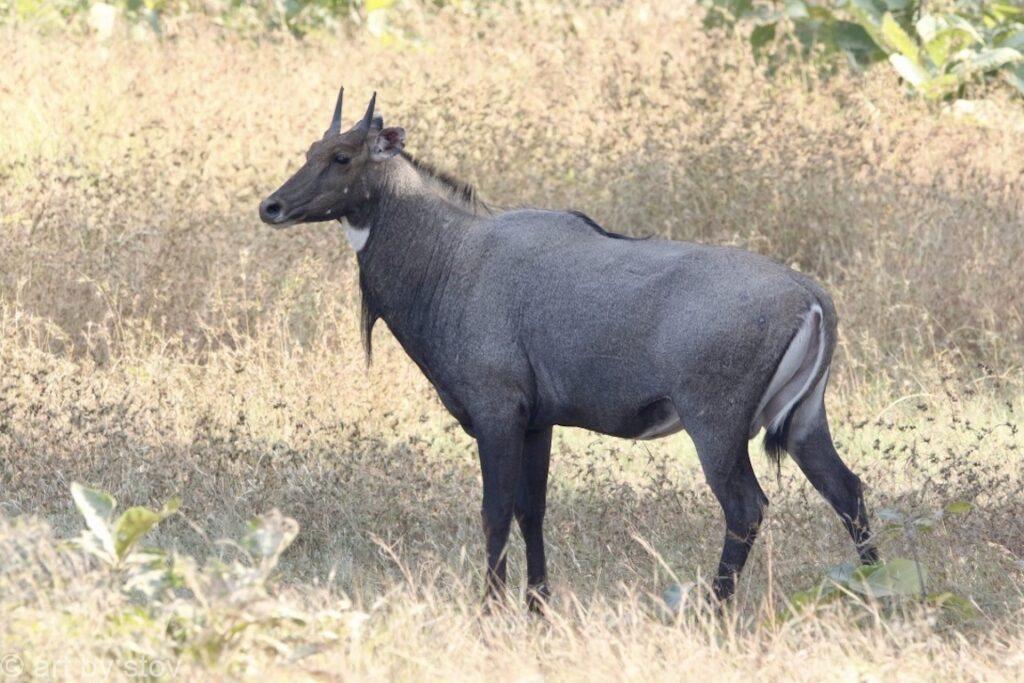
Whilst still very much in the heart of busy suburbia I spotted a Blue Antelope (Nilgai) bull strolling down the sidewalk toward the deep heart of new Delhi. I later messaged Adwait (our naturalist from Bandhavgarh Tiger Reserve (see blogs 12-14) about it on What’s App. He advised they are often seen in South Eastern Delhi as there is a wildlife corridor from Delhi almost into Jaipur, passing through Sariska Tiger Reserve which we had learnt in Panna had suffered a similar tiger extinction to that reserve. Due to the late spot and despite our still modest speed a picture was not possible.
To give you an idea here is a picture of a Nilgai bull we had seen in Panna earlier in the holiday (see blogs 9 & 10).
Once at Tughlakabad Fort Dharamveer insisted on taking us to the office and buying our tickets (50 Rupees (IRS) for Indians and 300 IRS for foreigners). It appeared that no one here spoke English and judging by the surprise at seeing us, foreigner visitors were a rarity indeed. I had heard of Tughlakabad from the William Dalrymple book much recommended for anyone wishing to learn the true history of Delhi. Tughlakabad was the fourth of the nine cities built in 1321 and abandoned in 1327 ahead of the Mongol invaders.
The existing walls, despite their centuries of neglect, still tower 20-30 metres above ground level and were swarming with security guards. Though not much exists internally of the city itself we were shown around by an overenthusiastic security guard who spoke very little English.
He was very surprised when I asked to see the baoli, step well. Such wells filled during the monsoon season and slowly throughout the dry months as the population take their daily needs and evaporation takes effect, the water level falls thus necessitating steps to reach the ever lowering water. He then took us past the toilets and pointed to some stubbly stumps of masonry which were apparently the royal palace. He then walked us through what I supposed in English castle terms would be the inner bailey.

Here there was an underground market, a little reminiscent of walking through the tunnels under the Colosseum in Rome. From the top was a splendid 360 degree panorama including an almost aerial view of the founder’s tomb. We were shown the entrance to a tunnel which purportedly goes across to the tomb and then onto Mehrauli, the capital city until 1290, it was one of those touristy things we did first time round in 2015.
Then came the crunch. Tour over the self-imposed security guard/acting tour guide asked for IRS 500. We both took umbrage at this; ordinarily for a good guide we paid IRS150 (Which we are told is too generous). We gave him IRS 200 and he went away grumbling. The ever lovely was then charged IRS 5 for the use of the loo when I paid nothing. Happy days!
‘Where next?’ asked Dharamveer, There is a baoli in Nizamuddin West we would like to see, unusually this one had water in it. I knew Nizamuddin West was a Muslim district but what we did not know was how poor the area was. Dharamveer, following instructions from me as he clearly was not familiar with where the Baoli was, pulled up and told us to stay in the car, which he promptly locked. Okay, we thought better safe than sorry. He came back after five minutes and told us where we had to go. We had to walk up the main drag into the centre of the area “keep going straight for 200 metres and the baoli is there”. He added that we shouldn’t be too long and that he would be waiting across the road directly opposite the entrance to Nizamuddin West, he would be looking out for our return and would re-cross the road to guide us back to the car.
As we entered the road we could clearly see the signs of poverty. It is a very old district (again somewhere that came up in City of the Djinns) and very narrow. As the road dog legged to the left and we lost sight of the security of our car and Dharamveer it became even narrower. We were being watched, not threateningly, but if we thought Tughlukabad Fort was not a tourist destination Nizamuddin West was definitely not! I glanced down at the ground only to see a big fat rat which had not managed to get across the road when one of the large hand carts passed through not so long ago.
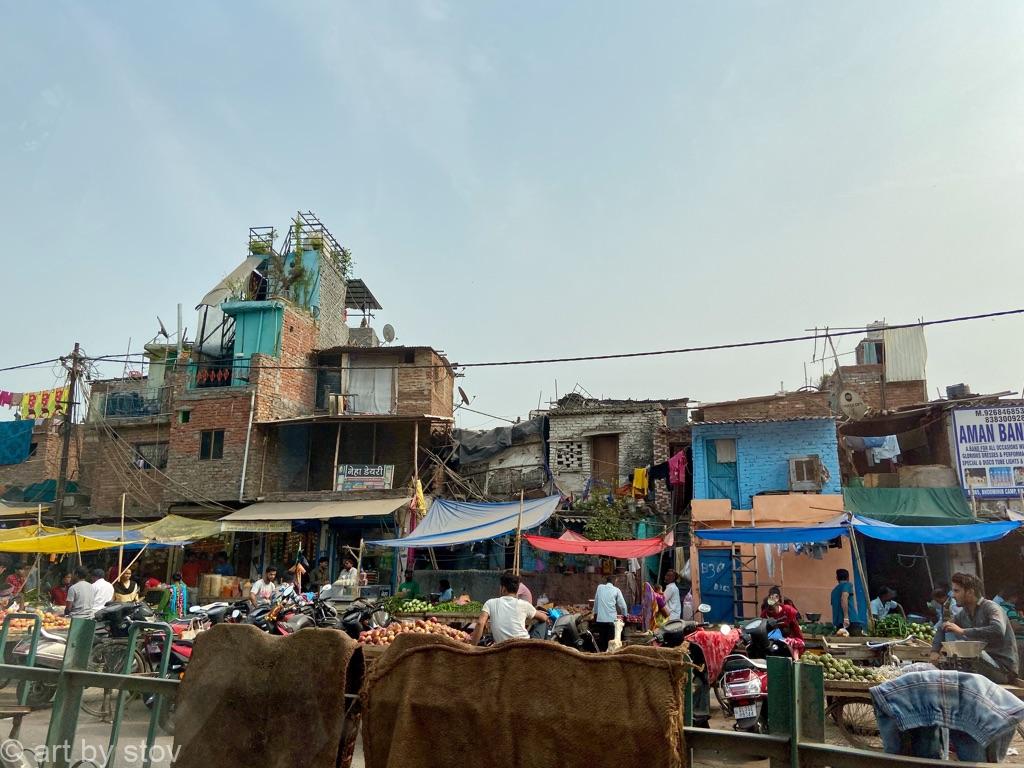
We reached a T-junction. The road, sorry, path to the left was narrower still. To the right the road seemed to open out. We went to the right, walked on a hundred yards or so, saw the exit to a mosque and asked the security guard if he knew where the baoli was, negative. One of the locals approached us and enquired if he could help us. He directed us back up to the T-junction and said the baoli was inside the entrance to the mosque on the right “it is perfectly good for you to go into”.
Back at the entrance we both looked at the rows of worn out flip flops and destitute sandals being guarded by the shoe keepers. We then looked at our nice new walking shoes and decided, most likely wrongly that we would never see them again if we went in. I thought of walking back down the street in stocking feet and then remembered the splatted rat. The ever lovely was keen for me to go in whilst she waited outside, again quite wrongly I was not prepared to do this. In truth all we needed to do was slip 10 rupees into the shoe keeper’s hands and we would have been perfectly ok to both go in. We chickened out and headed back down to the main road and our waiting car.
Next stop was a quickie to get a picture of the famous Lotus Temple. Another very touristy place but en route to the stop after. The temple was completed in 1986 by the Baha’i faith. This group believes that the place of worship should be open to people of all denominations and that only the scripts of religious texts can be read in the temple. No musical instruments are allowed nor any ceremonies. We wanted to see it because it is a stunning piece of architecture. 40 metres tall and built with 29 marble clad leaves forming an opening lotus flower in three tiers. The queue of people waiting to get in snaked down the road and round the corner. It proved difficult to park on the street outside so I had to poke the camera over the wall and hope to get a shot through the trees bordering the site…not ideal but a tick in the box.
Our next two stops were tourist traps, we knew, but we really wanted to experience them.
Humayun’s Tomb and it’s surrounds were truly beautiful. The ever lovely had been there with her mother in 2016 but wanted to go again. We entered the gardens, the ever lovely said it was a bit of a walk but well worth it, and diverted ourselves immediately to the Tomb of Isa Khan. It was built in the middle of the sixteenth century, about 15-20 years before Humayun’s. It was a perfect octagonal piece of Mughal art which had recently been renovated. We spent quite some time here and in the accompanying Mosque at the end of the garden.
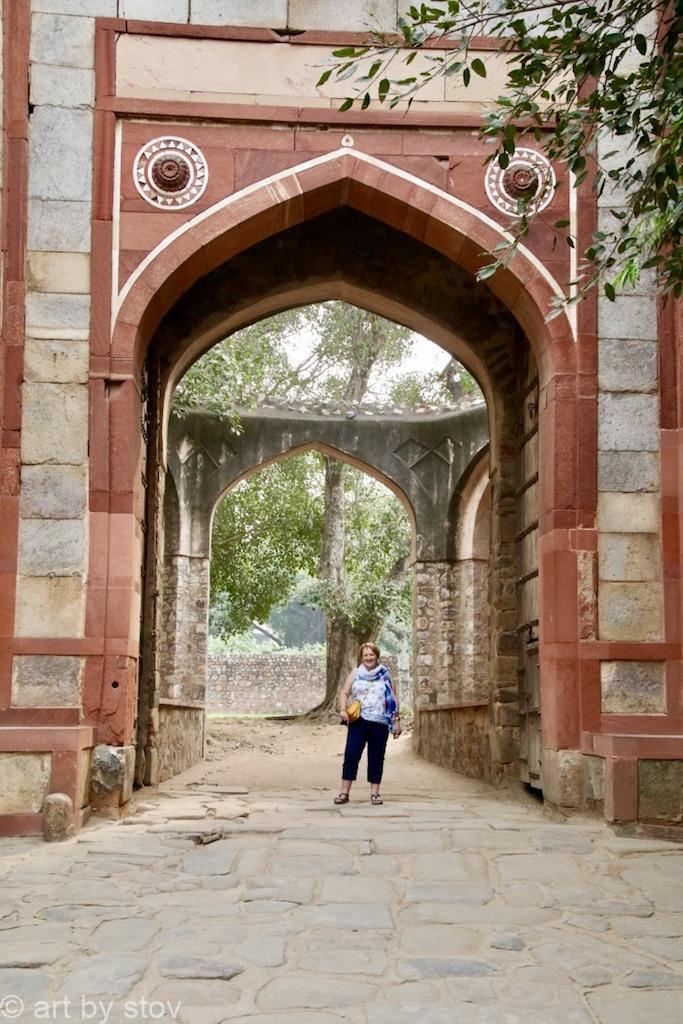
We then walked on towards the much larger Humayun’s tomb on the way stopping at a ruined gateway which was the entrance to the camp for the Syrian artisans who built and decorated Humayaun’s tomb. The entrance to the tomb and gardens was through the Bu Haleema Gateway, another stunning sixteenth century wonder. Since the ever lovely was there last they have built a small museum which was crammed with information about the whole site.
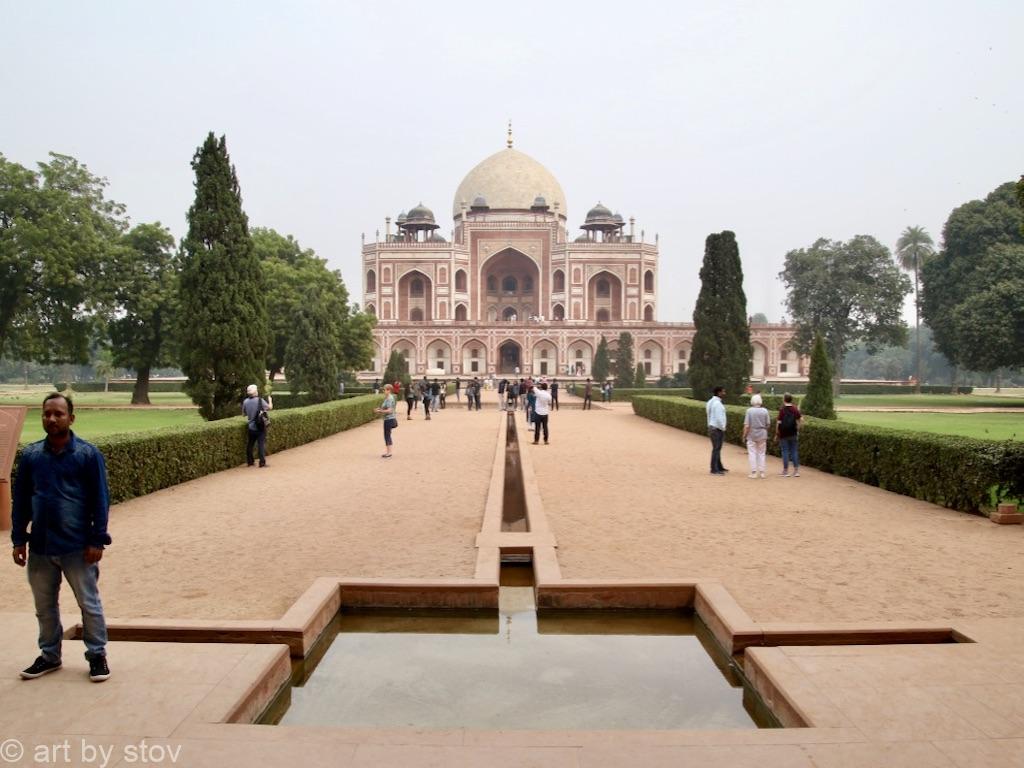
Eventually we moved on towards the tomb itself. As you get closer you realize how enormous it is. In comparison to the Taj Mahal it seems much larger. It is built on a plinth with quite steep steps hidden in stairwells accessed through an archway in each of the four walls. This ensured that the line of the massive walls were not broken by unsightly steps. It worked splendidly. Inside it was very sparse, but beautifully decorated with one large central chamber containing the coffin sized tomb. At each co corner was a smaller chamber, some with more tombs. In the middle of each side was an entrance hall on each side from which on either side passages connected with the corner rooms.
As we recovered after climbing the steep steps we were treated to a fascinating sight. As anyone who has been to India will know the Indians are selfie mad, I recall when we first went to India in 2015 in the gardens by the Qutub Minar the ever lovely and I were sketching when a crowd of Indian ladies flocked to the ever lovely , one pushing me aside so that she could sit near her.
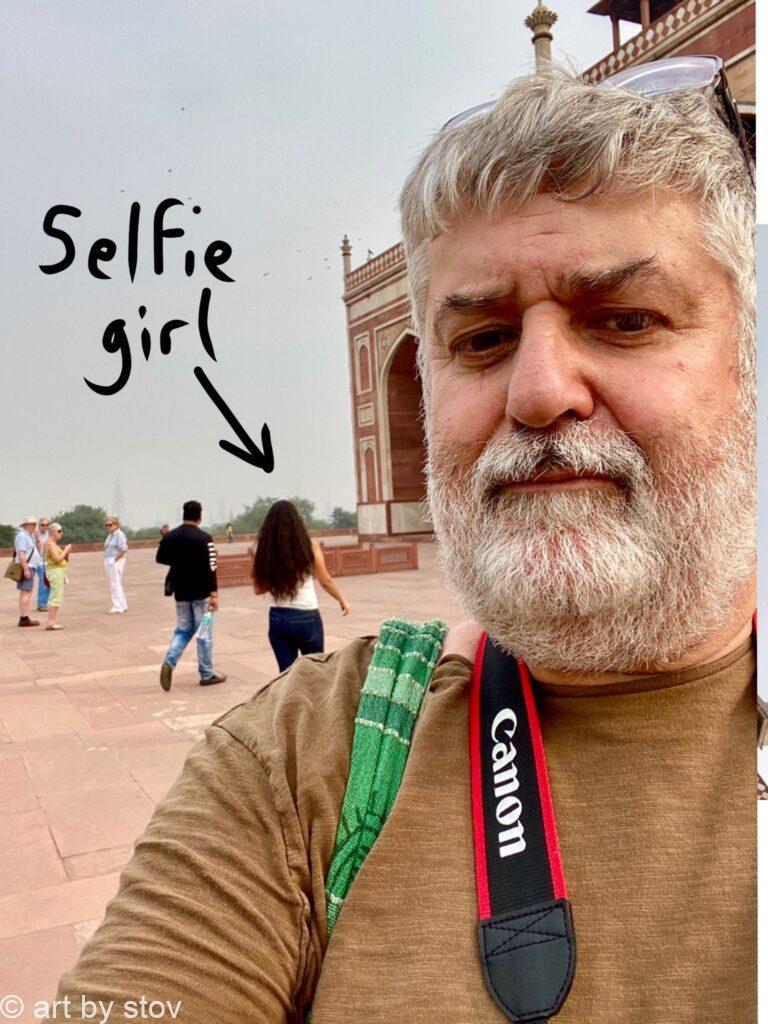
Then out came the iPhones, click, click, click and more clicks; they had found an Englishwoman, not only English but ginger haired also, which apparently raised the ever lovely to superstar status! Anyway, back to our poser of the day. Not one photo of the tomb, the gardens or her doting male friend but hundreds (and I do not exaggerate) of the lady herself. So animated was she that I tried to take a selfie with her taking yet another selfie in the background but she was up, down darting this way and that and became a mere blur in my many attempts.
There were many black kites and common mynahs in the gardens and swirling overhead amongst the tomb’s towers and garden trees. Fantastic experience to be walking along with a kite swooping down right at you at head height.
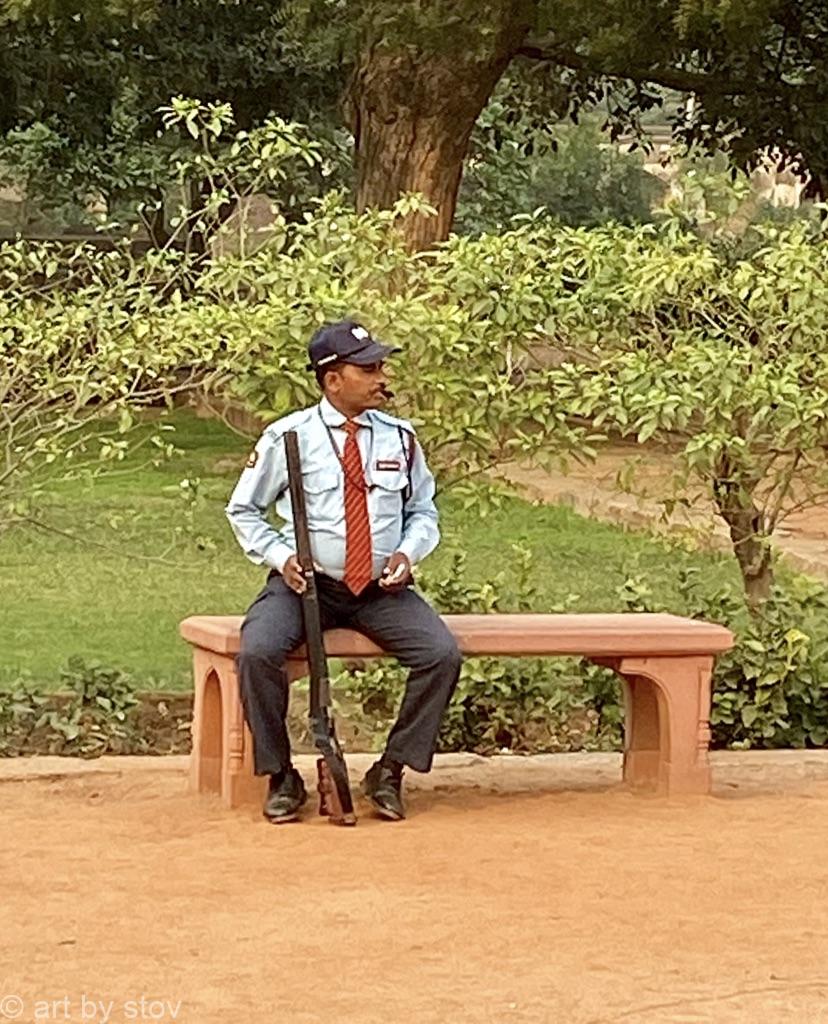
I kept hearing a whistle but could not identify where the noise came from. As we headed back to the Bu Haleema Gateway I turned abruptly as I was near deafened by the source of the whistle. A security guard was using it to fail to attract the attention of recalcitrant visitors who were climbing walls they should not. I also noticed that he had a double barreled shotgun over his shoulder. As he moved off to gain the attention he desired from his target he unslung the gun, pointed to the sky and fired off a barrel. A loud resounding bang and behind the smoke cloud discharge I could see every bird within earshot, seemingly thousands, scattering for their lives.
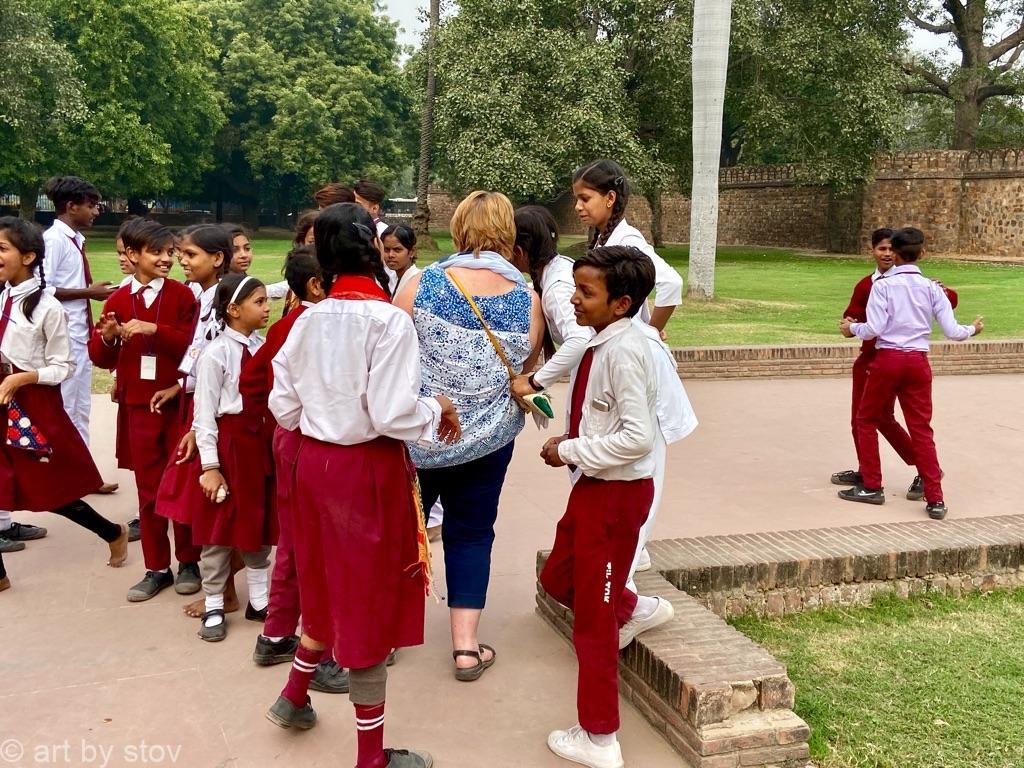
We carried on towards the exit to be reunited with Dharamveer and our faithful chariot. There was a rush of small feet and the ever lovely was surrounded by c 30 overexcited school kids wanting to take selfies; another moment of fame! Lots of namaste for both of us from all the kids. Two lads came up to me and asked my name. In return I asked the nearest and he responded Jameel and asked me to repeat it. Successful in that task I turned to the other boy and asked his name, it had so many syllables that I had to decline to even attempt to repeat it. We escaped the crowd and rediscovered Dharamveer patiently waiting for us in the car park.
Back in the car we give Dharamveer our next destination and as we wove through the traffic he explained that he came from a village halfway between Delhi and Jaipur where his wife and children live. He gets home for a couple of days roughly every three or four months. Occasionally he has long driving tours into deepest Rajasthan which sometimes pass near his home village and where possible he pops back home for a couple of hours. He works in Delhi as it pays regular and greater money which is all ploughed into the education of his children. He rarely has a day where he is not working.
The Agrasen Ki Baoli, is in a quiet and quite narrow residential street. Dharamveer dropped us at the entrance and we walked through a narrow gateway into a massive stone staircase surrounded by high walls. The entrance was about a quarter of the way down this enormous stepwell. Towards the end of a tiring day this is all we needed, many, many steps to the bottom and then many for the climb back up. It was also very busy with selfies and group portraits all around us. Again we appeared to be the only foreigners. We joined in and did our selfie and then walked down part of the way. The ever lovely (despite her fear of heights) very bravely walked out on one of the ledges that ran along the sides which served as the stooping place for water when the level in the well reached the various heights throughout the year.
I was reluctant about going all the way down to the bottom but decided in the end that I would regret not having done so and though my knees would take a time to forgive me I would rather have the regret of a positive experience with pain than a negative. There is no water in the well these days at any time of the year. Modern water supplies are sufficient to render the well redundant but what a piece of architecture. It must have been seven or eight stories high and clinging to the roof were hundreds and hundreds of bats. Thankfully all sleeping in the mid afternoon heat. By the time I climbed back up to reach the ever lovely, the crowd had dissipated some. We were able to get some nice uncluttered shots. We rejoined Dharamveer and headed for our last stop.
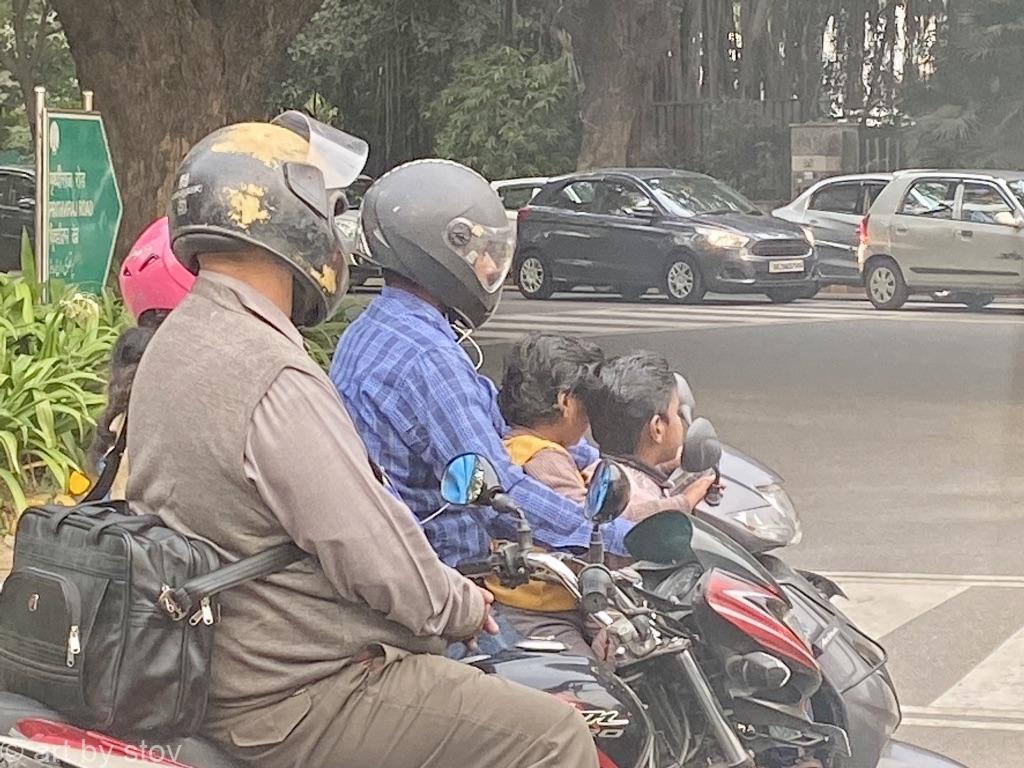
As we headed out across the busy streets towards and past Lutyens Delhi into Mughal territory once again we asked Dharamveer to find an ATM, he found a few but all were closed. We agreed that he should take us to Khan Market after our next stop where there are several which are bound to be open. At a road junction we saw a mum and dad and their two children on a motorbike; this is a common site across India.
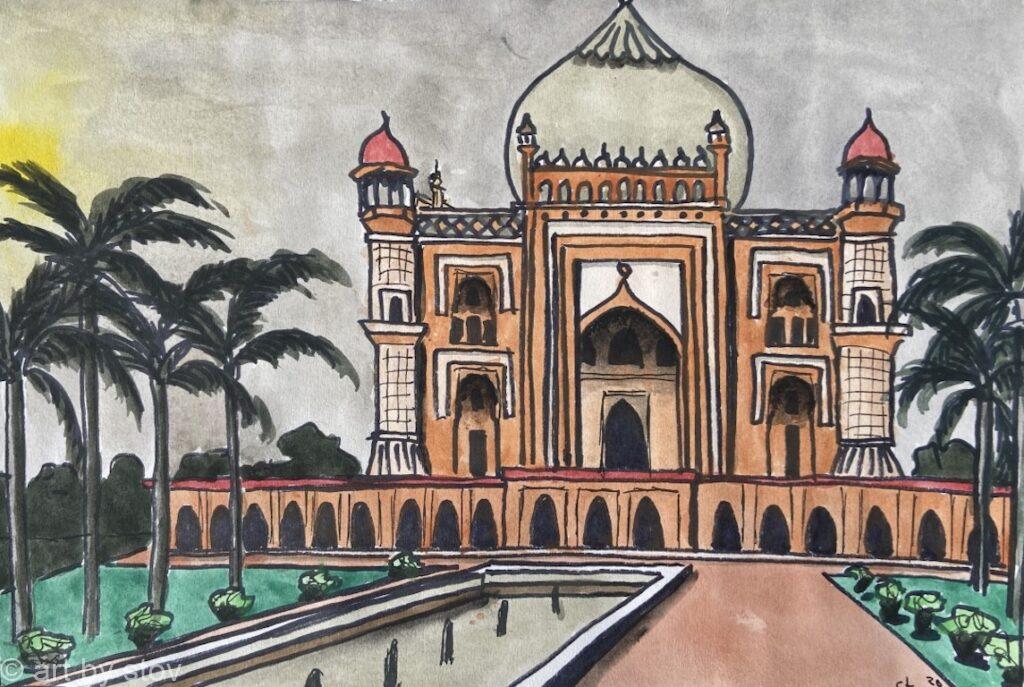
Safdarjung Tomb is in the process of being renovated. Another splendid piece of Mughal architecture from 1754, so a couple of centuries younger than Humayuns. As we entered the site we could see that the sun was going to set behind the tomb by the time we left. This was a much quieter location with few visitors and those that were there were locals. A leisurely stroll around with some wonderful photo opportunities and as we predicted some sun setting over Delhi shots to bring our day to the end.
Dharamveer was quite happy to carry on driving us but we felt quite satisfied with what we had achieved and he took us back to our hotel via the ATM at Khan market.
We had toyed with the idea of strolling back to the hotel through the lodhi gardens but the sun had gone down and it will be dark soon. Instead we had a quick walk around the hotel garden and then back to the room. We have an early up tomorrow so we decided to eat at Pickwicks again. The ever lovely had Pasta again and an Orange Crème Brulee. I had Chicken biryani and ice cream. Again quite delicious but again totally overpriced.
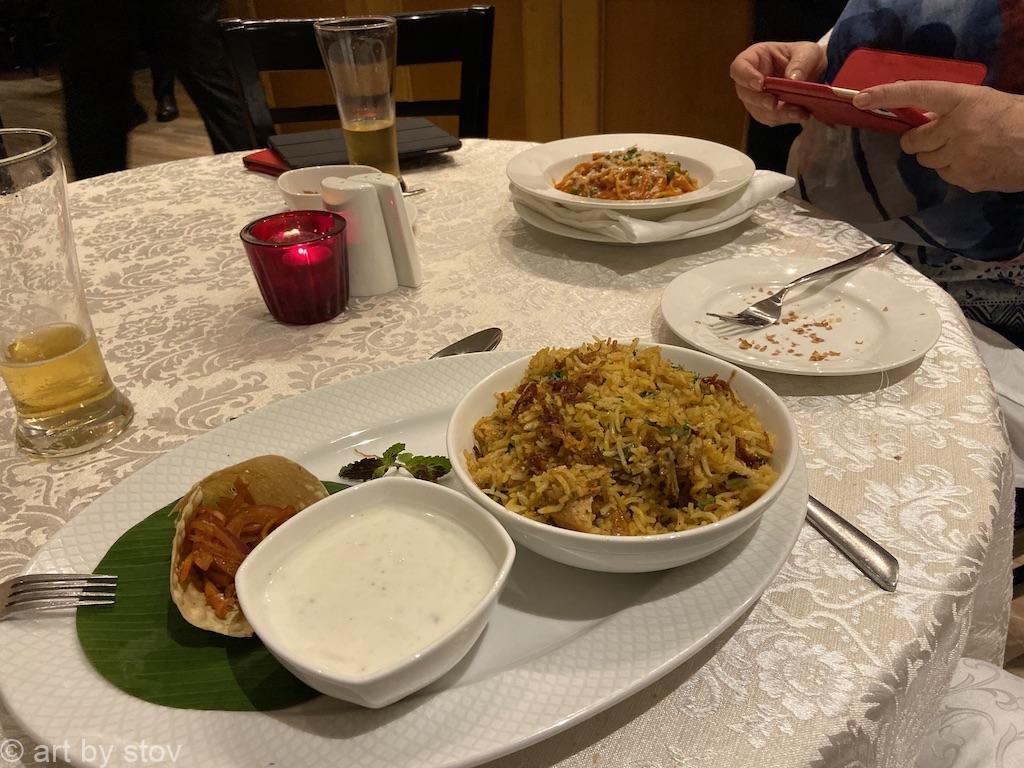
dinner at Pickwicks
The bed is luxurious and for the first time in over a week I slept through the whole night.
Join me next week as I help fly pigeons, watch a man wash, eat tasty snacks in Old Delhi and reveal the secret of the seven chillies and one lemon.
